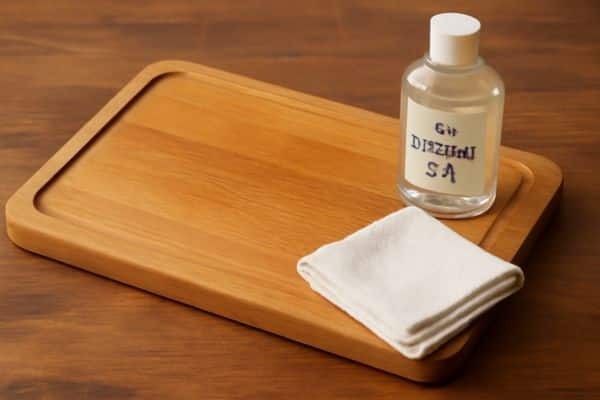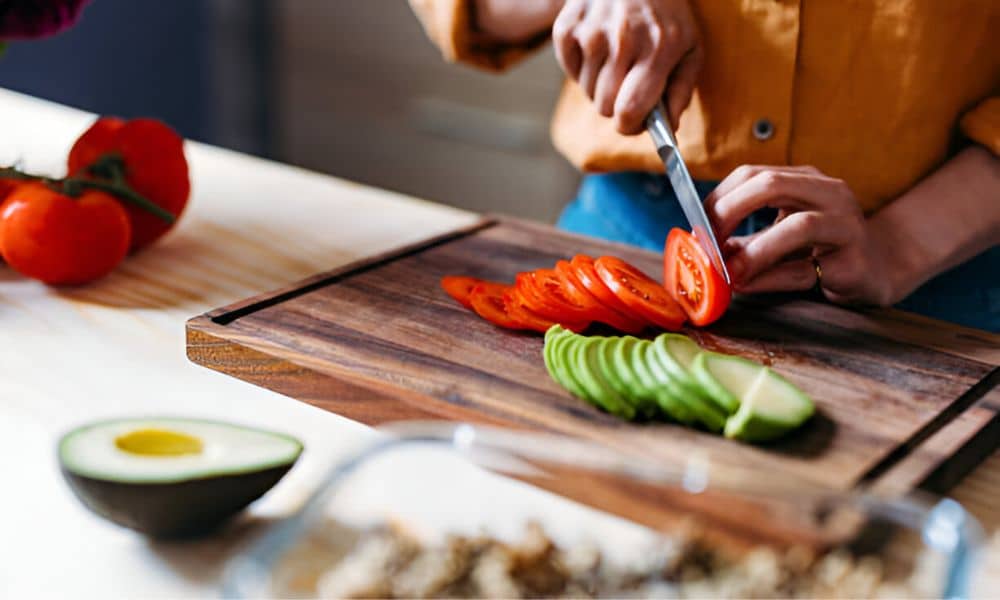I remember the first time I saw my favorite cutting board warped. It was wooden, and it no longer sat flat on the counter. I thought it was ruined. But I was wrong. With just a few simple steps, I fixed it.In this guide, I’ll show you how to fix a warped cutting board quickly and easily. These methods are simple And can be done at home; no professional help is needed.
Over the years, I’ve worked with many cutting boards. I’ve tested these techniques myself. Now, I want to share them with you So you can bring your board back to life.
Why Cutting Boards Warp
Warp when moisture enters the wood unevenly. It often happens from washing with hot water or leaving the board in direct sunlight. Wood absorbs moisture, Causing it to swell and shrink in different areas. This leads to warping, and soon your board doesn’t sit flat on the counter.
Understanding the causes of warping is the first step in fixing a warped cutting board. The moisture in the wood changes its shape. As the wood expands and contracts, it creates bends and curves.
I noticed my board warping every time I washed it with hot water. I’d dry it quickly, But the damage was done. Now, I dry it properly and treat it with oil to keep it in shape. Moisture control is key to preventing warping.
Step-by-Step Guide on How to Fix

Before you get started, gather a few simple tools: a damp cloth, warm water, a towel, and something heavy to apply weight (like books or a heavy pan). These steps will work for most wooden, bamboo, and even some plastic boards.
The Moisture Technique (For Wooden and Bamboo Boards)
- Gently wet the warped area with warm water. You don’t need to soak it—just enough to moisten the wood.
- Lay a damp cloth over the warped section. This will help the wood absorb moisture evenly.
- Leave the cloth on for a few hours. Check the board every so often. The wood will start to soften and adjust.
- Apply weight to the board. Place heavy books or a pan on top of the board to help flatten it. Leave the weight for 6-8 hours or overnight. The moisture will allow the board to slowly return to its original shape.
Heat and Moisture Combo (For Heavily Warped Boards)
- Wet a cloth and place it on the warped area. Lay the board on a flat surface.
- Set the board in a warm environment, such as a warm oven (no hotter than 150°F). The heat combined with moisture will make the wood more pliable.
- Check every 20 minutes, applying more weight as needed. The goal is to get the board flat again. You may need to repeat this a few times.
The Iron Method (For Light Warps)
- Lightly dampen the warped area. A small amount of water is enough.
- Set the iron to a low heat setting, without steam. Gently press the iron onto the warped area for a few minutes. Don’t leave it in one spot for too long.
- After pressing, allow the board to cool naturally. Repeat the process if needed.
Practical Tips for Getting the Best Results

Regular Maintenance
To keep your cutting board in great shape, oil it with food-safe mineral oil. This prevents the wood from drying out and helps maintain its look. Apply the oil with a soft cloth, rubbing it in well. I oil my board every month to keep it in good condition. For the best cutting board for brisket, make sure to choose one that’s durable and easy to clean.
Avoid Common Mistakes
- Don’t soak your board in water for too long. Wash it, then dry it right away. Prolonged exposure to water can cause the wood to swell and warp.
- Be cautious with heat. Don’t place your board in a hot oven or leave it in direct sunlight. Heat can shrink the wood unevenly, leading to warping.
Different Types of Cutting Boards and How Warping Affects Each

Wooden Cutting Boards
Wooden items are prone to moisture and heat damage. When exposed to water, the wood swells unevenly. This can cause warping. To prevent this, regularly oil the board and avoid soaking it in water.
Bamboo Cutting Boards
Bamboo is more resistant to moisture than wood. However, They can still warp with extreme heat or dryness. Bamboo is less likely to warp than wood, but it can crack or lose its shape over time. Keep it dry and store it in A cool place.
Plastic Cutting Boards
It doesn’t absorb moisture. But they can still warp under high heat. Placing a plastic board in A hot dishwasher or near a stove can cause it to bend. Unlike wood, plastic won’t swell, but it can lose its shape from heat.
Conclusion
To recap, fixing a cutting board is easier than you might think. First, Understand why it happens—moisture and heat can cause wood to swell and shrink unevenly. Then, use one of the simple methods I’ve shared to bring your board back to its original shape. Whether you use moisture, Heat, or an iron, Each method can help flatten your board with minimal effort.
So, The next time you notice your cutting board warping, don’t panic. With a few simple steps, you can bring it back to life.


